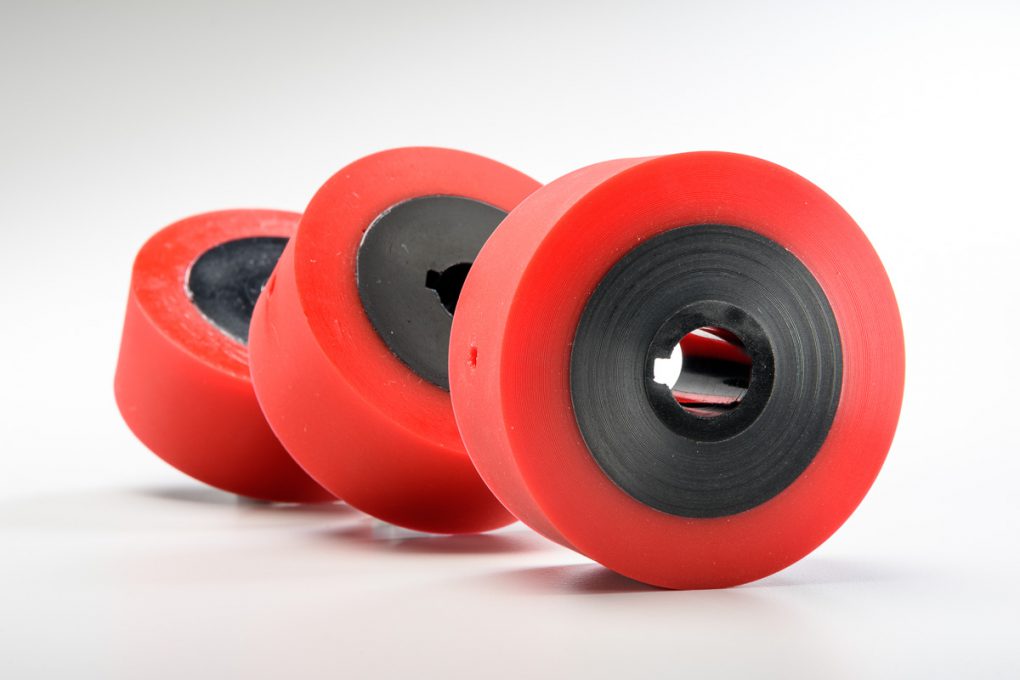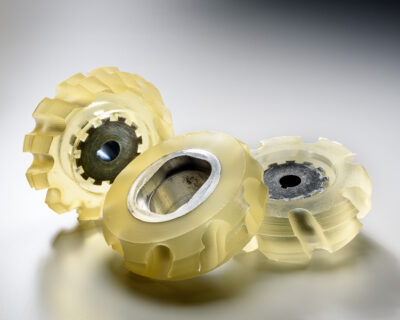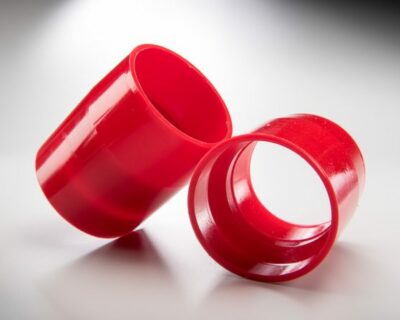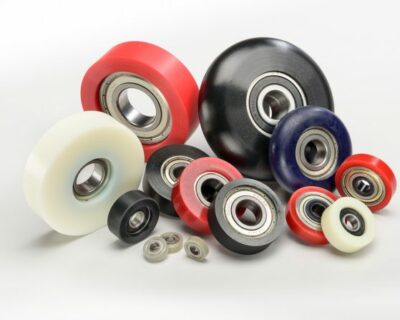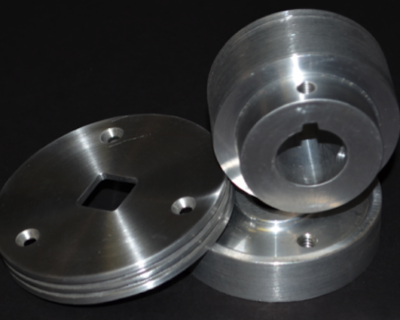Ideal for applications that involve lighter loads, where machining is cost-prohibitive, or weight is a factor.
Dual durometer is a specialty application where a hard urethane (e.g. 50D – 80D) is used as a hub or core in place of machined aluminum, steel, or stainless steel. A softer durometer urethane is then cast around the harder urethane.
Dual durometer wheels can be used as drive wheels and idler wheels. They’re also ideal where machining would be cost prohibitive, when a lighter weight material is needed, or where loads are relatively light.
Although not as well-known as their heavy-duty cousins – urethane-covered bearings and urethane-covered wheels with metal cores, inserts and hubs – dual durometer wheels are used in a variety of applications – which we describe below.
See if one of these examples helps you see how we can solve an application challenge you might have.
Dual durometer drive wheels
This standard drive wheel is used in an industrial application where multiple wheels are placed across a shaft and a material is being pulled through by driving the shaft on which these wheels are mounted.
In the photo, note the two special features of this wheel: the keyway in the black hub and the hole in the red cover (on the left side of the front wheel). UI drilled and tapped the hole once the urethane was cast. The hole allows the customer to use a setscrew to push down on the key to hold the wheel in place on the shaft.
With this dual durometer drive wheel, the customer eliminated machining costs while creating a rugged, long-lasting wheel.
Dual durometer idler wheels
Idler wheels run at the same speed as the material passing above or below them. In other words, they simply spin. For applications where the load is light, dual durometer idler wheels make a cost-effective alternative to wheels with metal cores or hubs.
These next two photos show examples of dual durometer idler wheels – albeit with very different shapes!
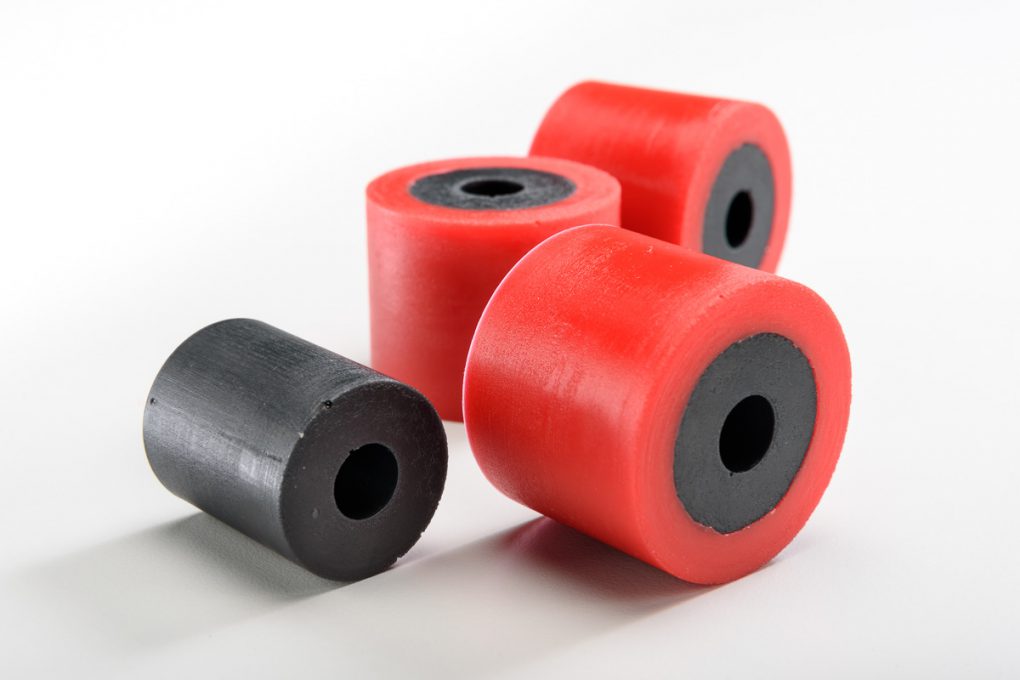
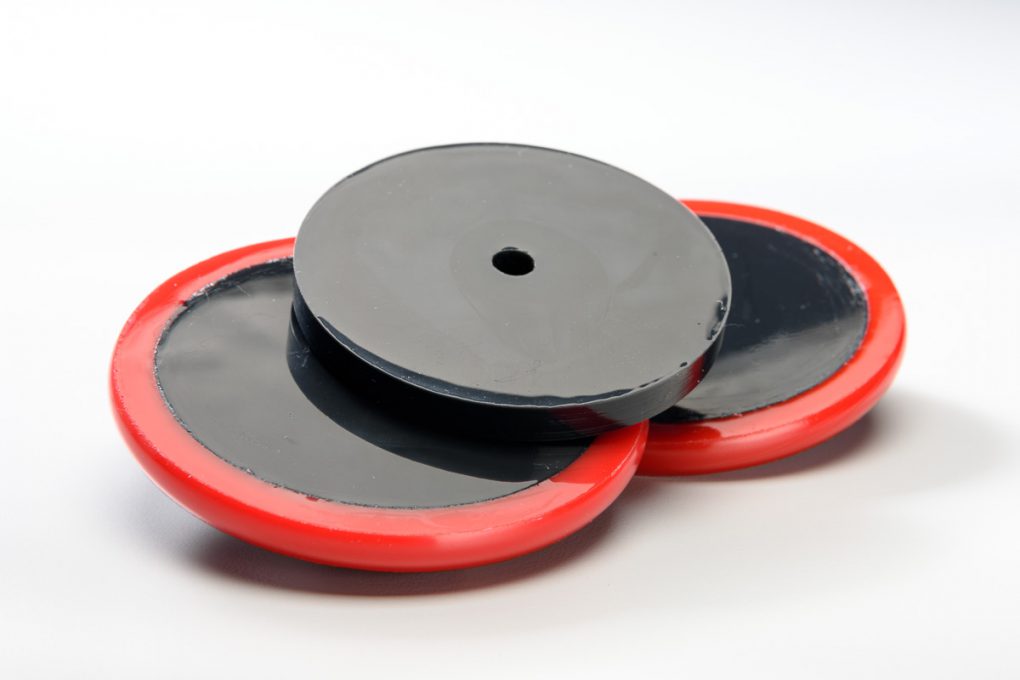
Specialty Application: Rugged lightweight wheel for pitching machine
One customer needed a wheel to withstand the day-to-day rigors of a softball pitching machine – but the wheel also needed to be lightweight. A machined light-weight aluminum hub (where you see the yellow section) would have been cost-prohibitive and would weigh too much.
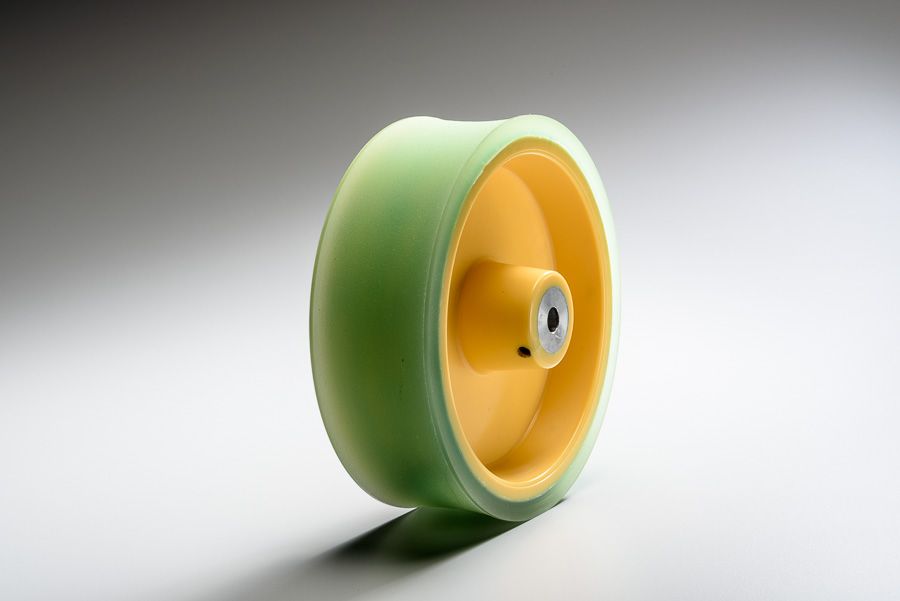
To create the wheel pictured, we used three layers: an aluminum core to provide mounting stability, a hard urethane inner hub to reduce weight and material costs, and a softer outer hub. The outer hub is machine ground with a cast edge surface.
As we did with this one, we can add contours, including chamfer and crown, to any wheel. Just ask!
Specialty wheel: Pull roll for cardboard manufacturing line
For this application, the customer needed to drive various thicknesses of cardboard through a machine without creasing it. The customer was also spending a lot of time stopping the machine to fine-tune it anytime the cardboard thickness changed.
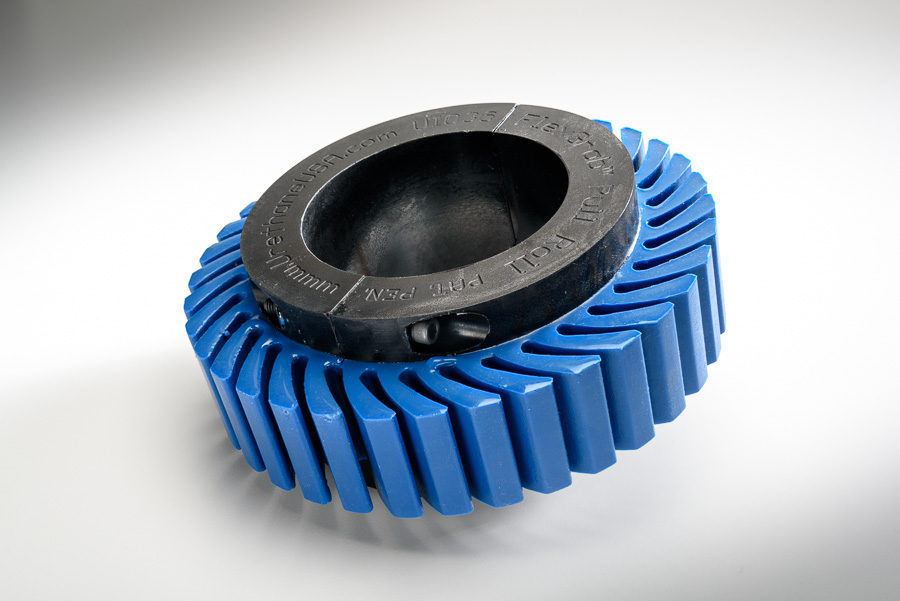
And, the wheel needed to be split (you can see the split in the black section, along with the screw), so that it could easily removed from the shaft without taking the machine apart.
To solve the challenge, UI created this dual durometer, inside-out no crush wheel. The wheel features two castings of urethane: the harder inner wheel and the softer outer wheel.
Instead of creating openings in the urethane, as with a standard no-crush wheel, we added fingers – which grab the various thicknesses of cardboard without having to stop the machine or creasing the cardboard.
Challenge solved: Dual durometer interlocking plate
One of our customers needed to create a urethane-covered plate that snapped together. The cost to machine a metal plate, with the interlocking teeth, would have been cost-prohibitive, so we recommended urethane.
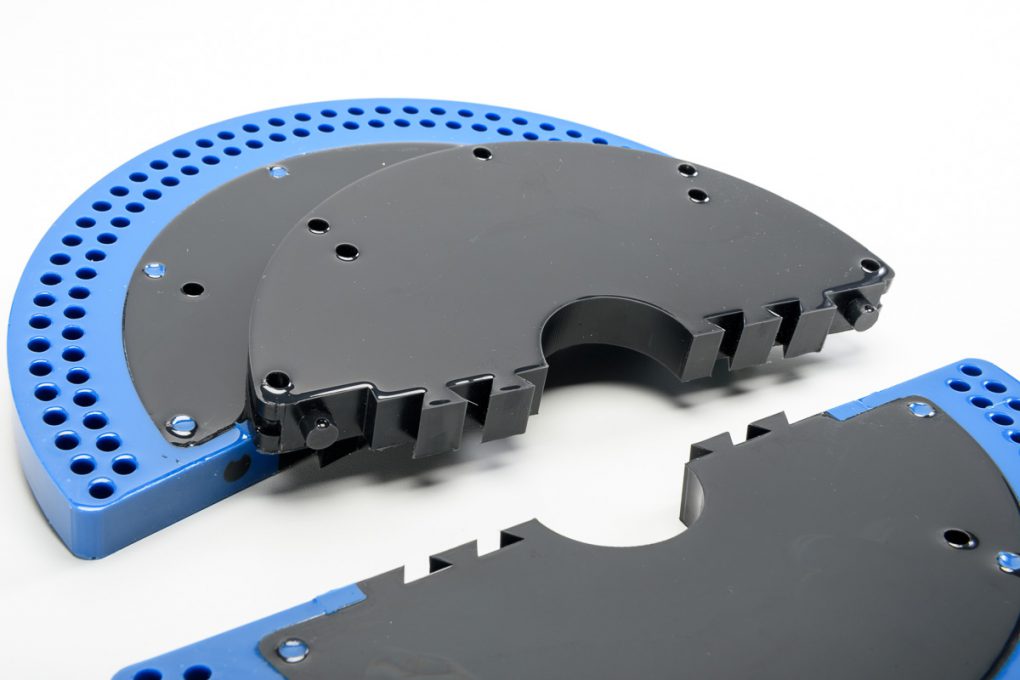
In the photo, you can see the two black pieces that snap together on the shaft; a square metal plate is then placed on each side of this urethane part. Screw holes cast into the black section allow the customer to screw the four pieces together – holding the assembly together on the shaft.
The blue section of this plate was created from a softer urethane; the holes around the edge act as a type of no-crush wheel and allow the assembly to move nicely over minor imperfections in the material.




